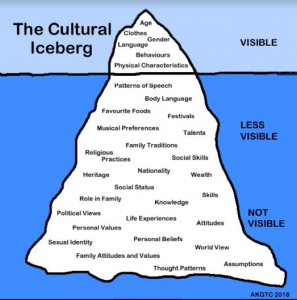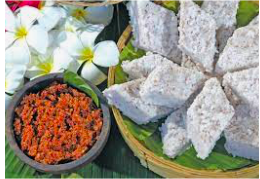TL;DR:
- Explore your cultural iceberg. What are the visible and less visible bits of your culture?
- What does culture mean to you and how can you address it in the classroom?
- Take a global perspective when teaching about cultures.
“Equity and Inclusion Just Got Better” Blog Reflection Questions:
- What does culture mean?
- How is culture embedded into the curriculum we teach?
- How can we acknowledge what we know and do not know about other cultures?
Today, Twitter connects me to inspirational ideas and makes the education world a bit smaller each day. I love staying connected with my professional network. Now, let’s explore the Cultural Iceberg Theory.

Cultural Iceberg Theory
April is the month of Sri Lankan New Year. It’s that perfect opportunity to teach about accepting differences in a global society. In Sinhalese, New Year is pronounced: “Aluth Avurudu” අලුත් අවුරුද්ද and in Tamil, pronounced: “Puthandu” புதிய ஆண்டு . The Sri Lankan New Year begins with prosperity, wealth, and good fortune. Some call it Sinhala New Year and others call it Tamil New Year.
This blog is to explain the cultural significance of understanding human cultural beliefs that are deeply rooted in many parts of the world. Culture is an important consideration that we can celebrate differences and embrace diversity.
Culture it is an important consideration that we can accept differences and embrace diversity. Share on XStep 1: Identifying Our Cultural Icebergs!
First, culture defined can be simple as our belief system in how we operate according to our societal norms and values. If we shift our thinking as a teacher, then we will be able to shift the thinking of our students. There is no better time than now to explore what we need to learn and what prior knowledge to activate about the Cultural Iceberg Theory.
Step 2: The Iceberg – Surface Culture vs. Deeply Rooted Culture
Secondly, let’s watch The Cultural Iceberg Video. I love learning through videos and here is a glimpse of what the research states on the Iceberg Theory of Cultural Awareness. As a reflective practitioner, I had the opportunity to reflect on my cultural beliefs as I taught!
Surface Culture: An example from my Canadian-Sri Lankan cultural heritage would be: always having spices in the kitchen since Sri Lankan cuisine has many spices to add the most delicious flavours. My image would be milk rice which comes from the tradition that during the Sri Lankan New Year, we eat this delicious meal to bring prosperity and good fortune into our lives.


Deep Culture: An example from my Canadian-Sri Lankan cultural heritage would be: taking shoes off when we enter a home and leaving them at the door out of respect. My image would be lighting the traditional rooster oil lamp as a family to bring about the new year on the 14th of April of each year in good spirit.



Step 3: Diving Deep Into the Ice-Cold Water!
Third, let’s shift our thinking. We need to understand our biases, opinions, and insights into how we view the real world through our lens and perspectives.
I had the unique opportunity to teach about this concept and collaborate with students as they took a deep dive into exploring their own cultural identity and the importance of understanding deeply rooted values and surface cultural values.
Think about the surface of the iceberg: Ms. Campesi refers to these as what we can observe with our five senses. To be empathetic as an educator on this learning journey we need to have an open mind and be understanding of the customs, traditions, values, and things that groups do.
The Cross-Cultural Story Project led us to this graphic which we used in my classroom with my grade 2 online students as we worked on a Google Slide project online. The students got to share and combine the “whole picture” of who they were and what their beliefs represent by using the graphic of the iceberg as the metaphor. We discussed the importance of our common understanding of each other and how we accept differences and build on commonalities to stay connected. The importance of who they are as human beings was an important consideration in order to be more reflective. To genuinely get to know someone, ask respectful questions about their culture, heritage, point of view, and perspectives.
Yours in Education,
Nilmini
References
The Cultural Story Project in class this week with Children’s Author, Melissa Campesi. The students will have the opportunity to publish their work and showcase their culture on the website www.crossculturalstorytelling.com at the end of the project.
Edward T. Hall’s Cultural Iceberg Model

About Nilmini Ratwatte-Henstridge
Nilmini Ratwatte-Henstridge teaches in Brampton, Ontario, Canada. She was born in Sri Lanka and immigrated to Canada with her family. As an elementary school teacher who is passionate about equity, social justice, and human rights in education, she enjoys teaching the younger generation to be global-minded citizens.
Discovering the world by connecting with others is an opportunity that we have today in our society today and she loves meeting new people! She is always learning while traveling to understand the inter-connectedness of this beautiful earth we live in! Nilmini LOVES cooking great meals, watching movies, and the latest fashion trends! Family and friends are close to her heart as she looks forward to balancing social media and navigating professional learning communities in education to network globally this year!


